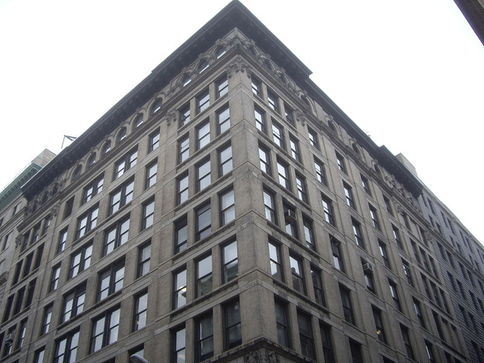Remember that factory fire I mentioned yesterday many people confuse with the actual reasons we celebrate Woman's Day? I researched a little bit more and found out that it happened in March 25, 1911, in New York. More than a hundred seamstresses died in the fire or jumping out of the building in this big industrial desaster, which contributed to the especification of more rigorous criteria on the workplace safety conditions and to the growth of labor unions.
Triangle Company occupied the last three floors of the Asch building, which had 10 floors in total, on the corner of the Greene Street and Washington Place, and employed about 600 workers, most of them young immigrant women who worked 14 hours a day, in work weeks of 60-72 hours, sewing clothing for modest wages between 6 and 10 dolars a week.
The factory conditions were typical of that time: inflamable textiles were stored in the whole factory, smoking was frequent, lighting was by gas and there were no fire extinguishers. During the fatal afternoon of March 25, a fire broke out. The employees of the tenth and eighth floors were notified and most of them saved themselves, but the alert for the ninth floor took too long to arrive. It had only two exits: one of the stairs was filled with fumes and flames when the workers realized the building was on fire. The other door was closed in order to prevent the workers to steal materials or take brakes. The only exterior emergency exit was soon ruined by the weight of the seamstresses who tried to escape.
The firemen arrived fast, although there were no available stairs beyond the sixth floor. Only one survivor was found, almost drowned, near the elevator's ascension conduct.
Triangle Company occupied the last three floors of the Asch building, which had 10 floors in total, on the corner of the Greene Street and Washington Place, and employed about 600 workers, most of them young immigrant women who worked 14 hours a day, in work weeks of 60-72 hours, sewing clothing for modest wages between 6 and 10 dolars a week.
The factory conditions were typical of that time: inflamable textiles were stored in the whole factory, smoking was frequent, lighting was by gas and there were no fire extinguishers. During the fatal afternoon of March 25, a fire broke out. The employees of the tenth and eighth floors were notified and most of them saved themselves, but the alert for the ninth floor took too long to arrive. It had only two exits: one of the stairs was filled with fumes and flames when the workers realized the building was on fire. The other door was closed in order to prevent the workers to steal materials or take brakes. The only exterior emergency exit was soon ruined by the weight of the seamstresses who tried to escape.
The firemen arrived fast, although there were no available stairs beyond the sixth floor. Only one survivor was found, almost drowned, near the elevator's ascension conduct.
~Ally

 RSS Feed
RSS Feed